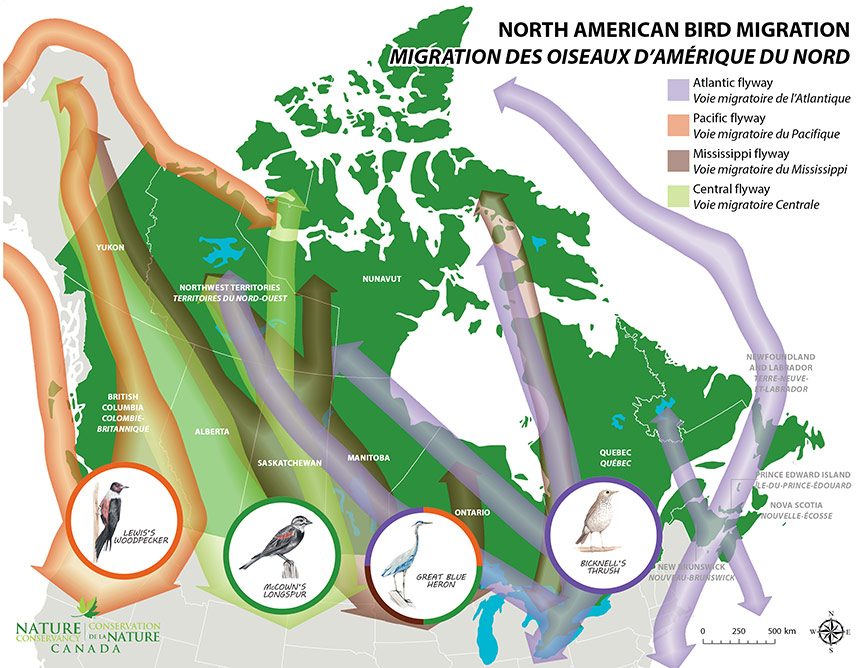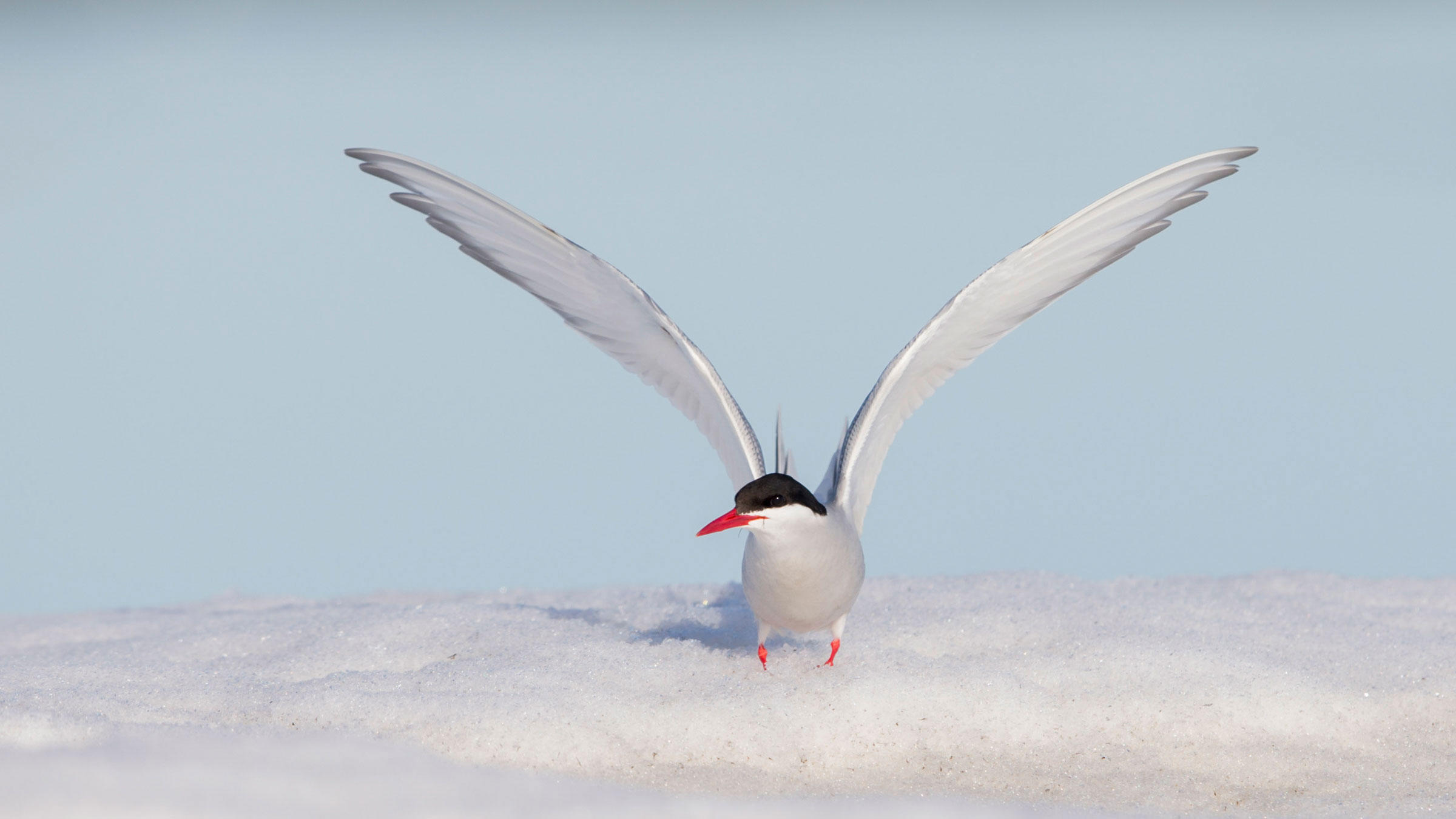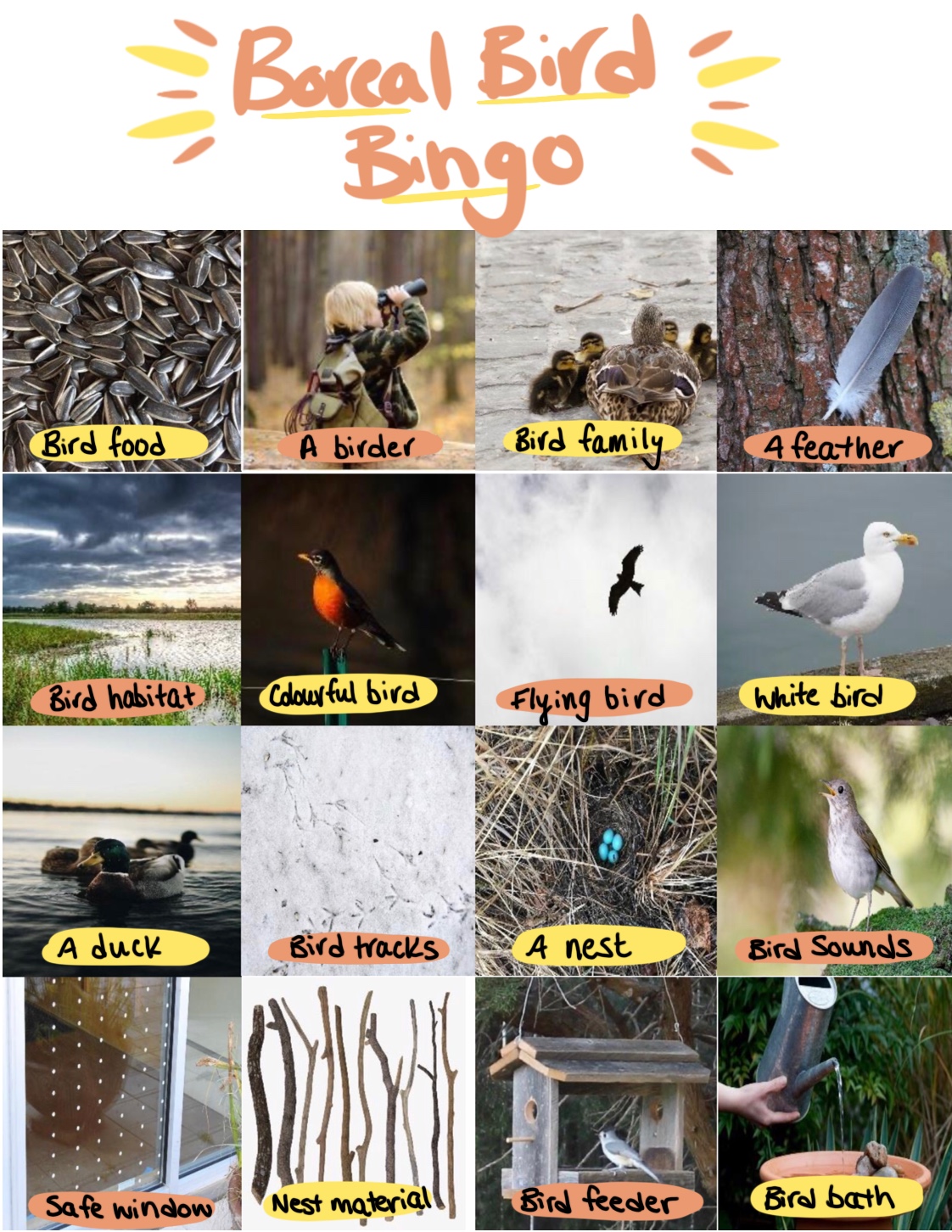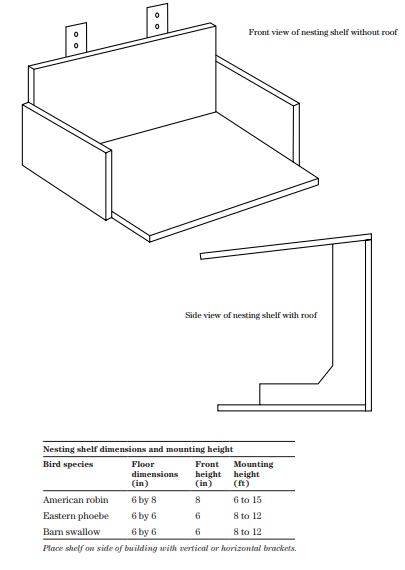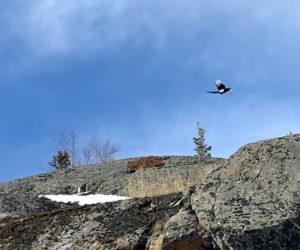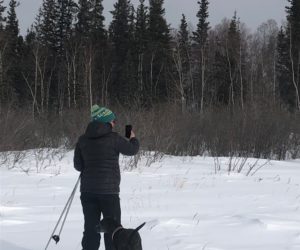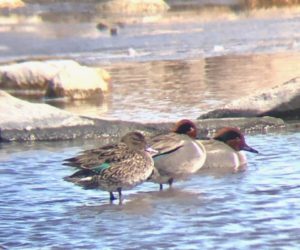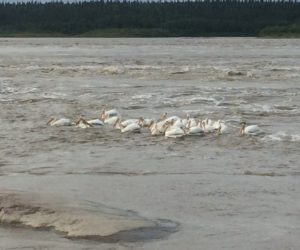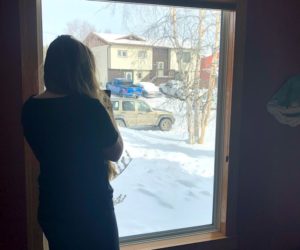Conservation at Home
Canada’s boreal forest represents 25 per cent of the planet’s remaining intact forest. This forest is quite an amazing place; more than 300 species and billions of birds rely on Canada’s boreal forest as critical habitat and a safe place to have their young. In this way, the boreal forest supports a huge variety of birds whether they are migratory, coming from as far as South America, or residents of Canada year round.1
CPAWS-NWT collaborates on a number of large scale conservation initiatives that protect the boreal forest. In doing this we are working to secure habitat for birds and the many other species that use the same habitats. Bird protection efforts are also extremely important where each of us live, there are many small, yet significant things you can do to help boreal birds thrive from your own home. It is each of our responsibility to ensure a future for our boreal birds!
1. Boreal Songbird Initiative
Protect Birds From Far and Wide In Your Own Back Yard
-
Learning bird identification skills is a great way to connect with nature wherever you are and is a first step to protecting birds around your home. Which birds use your yard as habitat? Do they nest there? Are they migrating through? What is attracting them; trees, shrubs, flowers? Your observations contribute to your own bird protection efforts and can contribute to data collection that is important for all bird species in Canada.
Grab your bird book off the shelf and sharpen up your skills or download an app like Merlin Bird ID that makes bird identification easy for everyone. You can download Merlin here.
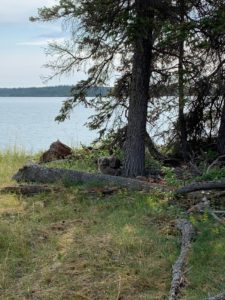


With Merlin Bird ID you can enter characteristics of the bird you’re observing or use a picture to get ID suggestions. Here is an example using Merlin to identify a juvenile Great Horned Owl!
Photo by: Kaitlyn Vician, Blachford Lake, NTWe’d love to see your bird ID skills in action. Tag us in your photos or send them to nwtadmin@cpaws.org to be featured on our page!
-
While our yards and gardens can be sanctuaries for birds, houses and other buildings can cause some serious harm. The good news is that there are a few easy ways to make our homes bird safe.
1.Windows
The first thing is to make windows visible to birds. Whether you live in a house or an apartment, it’s likely that your windows have got in the way of a few birds. Windows will appear invisible to birds if they see a reflection on them, if they can see through the window to another, or if there are plants inside near the window. So, what we need to do is to make windows stand out. A contrasting pattern in any design will help so feel free to get creative! The only guidelines are that visual markers should be no more than 10cm apart vertically or 5cm horizontally to keep even the smallest birds safe. Here we’ve listed a few suggestions:
- Make lines with tape, there are special varieties that let light in but remain visible to birds but plain masking tape will work just fine
- Use puffy paint like in this video tutorial
- Use paper cut outs
- Use a bar of soap to draw lines
- Hang up strings or rope
- Use polka dot stickers
- Place screens on the exterior of windows
- And maybe my favourite suggestion.. don’t clean your windows! Even a little bit of dust can minimize the reflection seen by birds.
We’d love to see how you decorate your windows to make them bird safe. Send pictures to nwtadmin@cpaws.org.
2. Houseplants
Another easy way to keep birds safe is to place houseplants away from view through your windows. Houseplants can make it seem as if the outside is inside, confusing birds and making them more likely to collide with your window.
3. Bird Feeders
If you have bird feeders you can place them within 1m of your windows so that birds can’t get enough speed to seriously injure themselves if they do decide to fly toward the window. You can also place your feeders further than 3 meters away from windows to minimize the likelihood that the bird will decide to fly toward a window in the first place.
4. Lights
The majority of migratory birds will be active at night, using the lights of the night sky to navigate. Artificial lights can disorient birds making them lose their way, become exhausted, or even collide with buildings. There is an easy fix for this issue, turn out the lights at night! This is particularly important during migration season, which varies for each species, but is generally during spring and fall. If turning lights out at night isn’t an easy option at your home, FLAP Canada has some other suggestions to minimize the impacts of light on birds.
If you live in an apartment building you can talk to your neighbours or landlord about making your building bird safe. Get in touch with CPAWS-NWT if you want some tips on how to start this conversation.
5. Helping Injured Birds
If, despite your best efforts, you still find an injured bird it is best to leave it be and contact your local ENR office for assistance. You can also report bird collisions to FLAPs global mapping database. This will help scientists understand where there are high concentrations of bird collisions and try to minimize those collisions in the future.
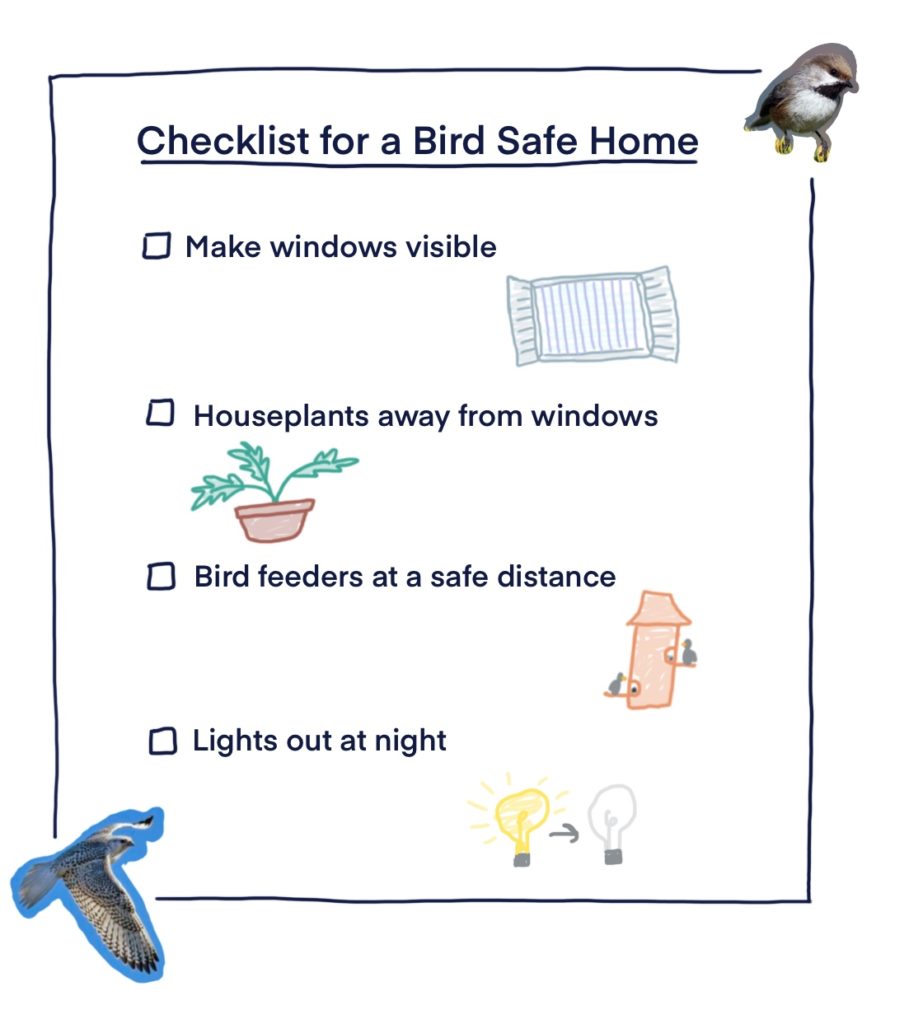
-
Create a patch of vibrant habitat that helps birds thrive in any outdoor space. To make the ultimate bird sanctuary you’ll need three things: food, water, and shelter.
1. Food

To attract a range of birds, maintain a variety of food sources like fruit, berries, insects, seeds, nuts and nectar.
Bird feeders
You can provide bird seed through a feeder or just by sprinkling it on the ground. Start off with a mixed bird seed with a good assortment of small seeds, sunflower seeds, nuts, and fruit. This should cover the bases for most species. Sunflower seeds are a particular favourite of overwintering birds looking for good fat to last them the winter.
As your bird sanctuary progresses, you can tailor your bird seed and feeder to the species that you want to attract based on their specific nutrient needs. To learn about different types of feeders check out the Canadian Wildlife Federation’s list.
Keeping a feeder safe:
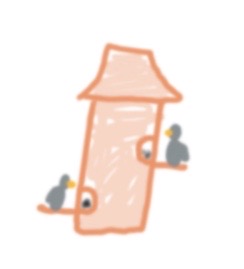
- If you have a very popular feeder, congratulations! You might want to consider adding another. Birds need a little bit of social distance too, to minimize the spread of sickness.
- Avoid letting wet food sit in your feeder. It could rot!
- Clean your feeder regularly by emptying and washing it with hot water once a month.
Late winter special: One benefit of the snow still being around is observing bird tracks. These will be especially abundant under your feeder. Try your hand at identifying them! Nature Tracking is a great place to start.
Bugs

A bug friendly garden is a bird friendly garden. Bugs are a main food source for many birds, they eat millions of insects and parasites every day.
Avoid pesticides in your bird sanctuary. They reduce a food source and can be poisonous for birds and harmful to native plants. As your backyard bird population increases and you maintain native species you’ll have the best natural anti-pest team and should need fewer pesticides anyway! The Northern Lights Gardening Manual has a great section on natural pest control if you’re trying to have a thriving garden in the north.
Leave the leaves! Fallen leaves are an important habitat layer, and serve as a natural mulch. They will reduce unwanted weed growth, keep your plants’ roots cool and moist, and provide habitat for insects.
2. Water
Having a water source is a great way to support birds, pollinators like bees, and other beneficial wildlife in your bird sanctuary.
Bird baths
The best bird baths are close to the ground, shallow with under 2 inches of water, have rough bottom (try using stones), and are cleaned often. Birds love the sound of running water. If you’re looking to take your bird bath to the next level try adding a moving water feature.
Dust baths
Many birds require dust baths as well as water. Sparrows of many types are some of the most frequent dusters, thrushes, thrashers, larks, and wrens take regular dust baths as well. Sand boxes make dust baths or you can create one specifically for birds. Use a container or dig a shallow area of yard and use any fine grained, dry dirt to create a dust bath for your backyard birds.
3. Shelter
Dead trees and brush
Leave dead trees and brush where they stand, collect and set aside fallen branches and logs to create a brush pile in the corner of your yard. Birds and other wildlife can use the brush to take cover during extreme temperatures and severe weather year-round. This provides shelter for overwintering birds and some may even nest there!
Plants
Plants can provide both food and shelter to birds. It is important to choose native plants for your bird sanctuary, this is where another one of our favourite tips comes in, do nothing! By leaving your outdoor space to grow native species you can avoid a lot of extra gardening and landscape work while supporting birds.
Good native plants for a yard in the NWT: Labrador tea is hardy and welcomes many pollinators with its abundant small white flowers, the purple lilac will do the same, bearberry requires very little attention and will grow into a bushy plant and give your landscape some height. Here is a great resource to learn about native plants in the NWT.
It’s also important to remove invasive plants. Be mindful to watch for invasive plants. Some common invasive plants in the NWT can be found here.
Leave the seeds, don’t “dead-head” all of your flowering plants after they bloom, as they can be an important source of food during the fall and winter.
Lawn
For most birds, losing some lawn is a good thing. Larger patches of habitat with lawn pathways will create a rich wildlife habitat and lovely effect in your yard. But, lawn-lovers don’t despair, see here for wildlife friendly mowing.
Making an Apartment Bird Sanctuary
Anyone can make their surroundings a little more appealing to birds, whether it’s at your apartment, your office, a community garden, or any other outdoor space. Here are some suggestions for small-space bird sanctuaries:
- Make a native species planter garden, many species native to the NWT will do just fine in small planters. Check out a few here.
- Put out a water feature.
- Hang a bird feeder. Suction cup feeders that can be set right on the glass, these can be perfect for small balconies and will dramatically reduce the likelihood of fatal window collisions
-
World Migratory Bird Day
This Saturday, May 9th, is world migratory bird day. This is a day to protect, celebrate, and learn about the ways that birds connect our world.
Each year, nearly 350 species of birds migrate from North America to Latin America, Mexico, and the Caribbean. Many of these birds will call the boreal forest home for part of the year.
Every spring, skies across Canada are filled with the sights and sounds of millions of birds arriving home from their southern wintering grounds. Many birds travel along regular routes, known as flyways, in order to make the journey back to Canada. They often follow prominent natural features such as coastlines, mountain ranges, and river valleys. Some species restrict their migration to just one of the flyways while others will use multiple routes during migration. Many millions of birds migrate through the Northwest Territories each year along three major flyways, the Atlantic, Mississippi and Central and rely on the boreal forest for their survival.
This map from the Nature Conservancy Canada shows the main North American flyways and some common birds that can be seen on them.
The World Travelling Arctic Tern
The Arctic Tern has one of the longest migrations on Earth, breeding in the far northern pockets of North America before migrating all the way down to Antarctica. They migrate around 40,000km a year, that’s equal to once around the entire planet. Half of the world’s population of Arctic Terns nest in the boreal forest. Many of these can be seen in the summers nesting on lakes across the NWT.
Spring Bird Activities
Observing the birds we see in our own backyards and learning more about them is a great way to celebrate World Migratory Bird Day this year!
Bird Tracking Challenge: For 20 minutes, once a week, observe the outdoors around your home from your window, backyard or wherever you can stay safely distant from others. Count all of the birds you see and identify those that you can. Do this throughout the summer and note the differences in bird species as the season progresses.
Boreal Bird Bingo: While you’re doing your spring bird observations fill out this boreal bird bingo card. Let us know how it goes by sharing a photo on our Facebook page or email nwtadmin@cpaws.org. Download here.
Colouring sheets: get creative and learn more about migratory birds with these colouring pages and accompanying fact sheet:
Resources for tracking and identifying spring birds:
- List of all birds in the NWT: wondering if you might see a certain species around where you live? Check out this list.
- Birding NWT Public Group: take your birding to the next level by connecting with other casual birders and experts.
- Yellowknife Bird Arrivals Public Group: Many birds have already started arriving to their summer homes in the NWT, report your sightings and share in the excitement with the Yellowknife community.
- eBird database: If you’re enjoying identifying and tracking birds you can contribute your observations to this online database. Your observations will contribute to mapping bird movements across the globe which helps to inform conservation efforts.
-
Artificial nesting habitat can increase the number of nesting sites available in an area and make it safer and more attractive to birds.
The best nesting structures are those built close to natural bird habitat, a reliable source of food and water, and that have an easy way for birds to escape and hide from predators.
There are specific factors that differ between species that will make nesting habitat more desirable. For example, some birds prefer platforms to houses. So if you’re trying to attract a certain bird it’s best to tailor the habitat to them.
Bird Houses
Early spring is a good time to install backyard birdhouses, at this time birds are already starting to arrive and shop around for nest sites. Some of the most common backyard birds that use houses are chickadees, bluebirds, and wrens. But you can attract many other species depending on what kind of habitat you have near your home and the kind of box that you put up.
The best nesting boxes:
- Have thick walls made with untreated wood, this provides adequate insulation and minimizes toxins
- Have holes for ventilation and drainage, this lets in lots of oxygen and helps avoid rot
- Have an extended and sloped roof to keep out the rain
- Have a barrier to keep out house cats and other predators
The National Wildlife Federation lists some helpful dimensions to tailor your birdhouse to specific species here.
Nesting Shelves
Some birds love to nest under eaves, inside garages or barns, on the side of buildings, or on other flat walls
and prefer nesting shelves to houses. Nesting shelves are used by birds like american robins, eastern phoebes, and barn swallows.
A good nesting shelf:
- Is placed under an overhang or has one built in
- Is adjacent to an open area
- Has a reliable water source nearby
- Has mud nearby for birds to use in nest construction
- Has old nesting material removed after each breeding season
This diagram is from the Wildlife Habitat Council and you can find more bird house and nesting platform diagrams here.
Nesting Material
To make nesting even more likely in your new habitat you can provide good nest building materials.
These can include:
- Fallen leaves and twigs left unraked
- Dry grass (make sure the grass hadn’t been treated with pesticides)
- Feathers
- Plant fluff or down (cattails, willows, etc.)
- Moss
- Bark strips
- Pine needles
- Spider silk (especially used by small birds like hummingbirds)
Some other items may be appealing to birds but could be very harmful, such as:
- Plastic strips
- Tinsel
- Cellophane
- Aluminum foil
- Dryer lint
- Anything that isn’t biodegradable
These artificial structures can’t replace natural nesting habitats so we should also be doing our best to protect wild spaces.
Protecting boreal birds in action!
Send us photos of birds you’ve spotted or how you’ve made your home bird safe and we’ll share them here. We can also connect you with other Boreal Bird participants! Contact: nwtadmin@cpaws.org
![CPAWS NWT Logo [Transparent Background] CPAWS NWT](https://cpawsnwt.org/wp-content/uploads/2018/09/CPAWS-NWT-Logo-Transparent-Background.png)



